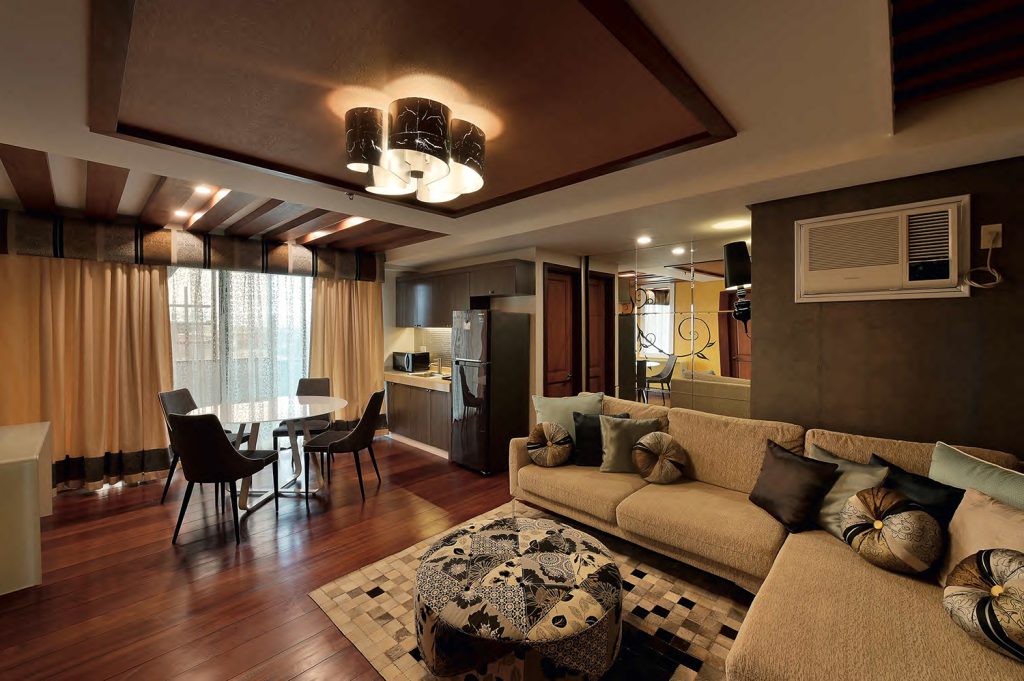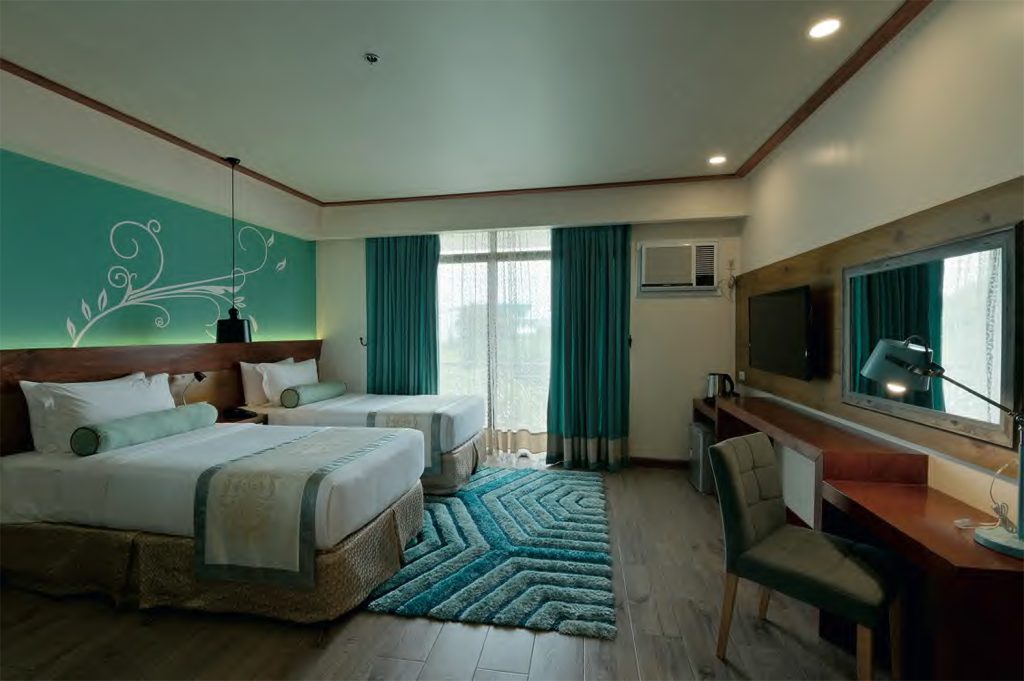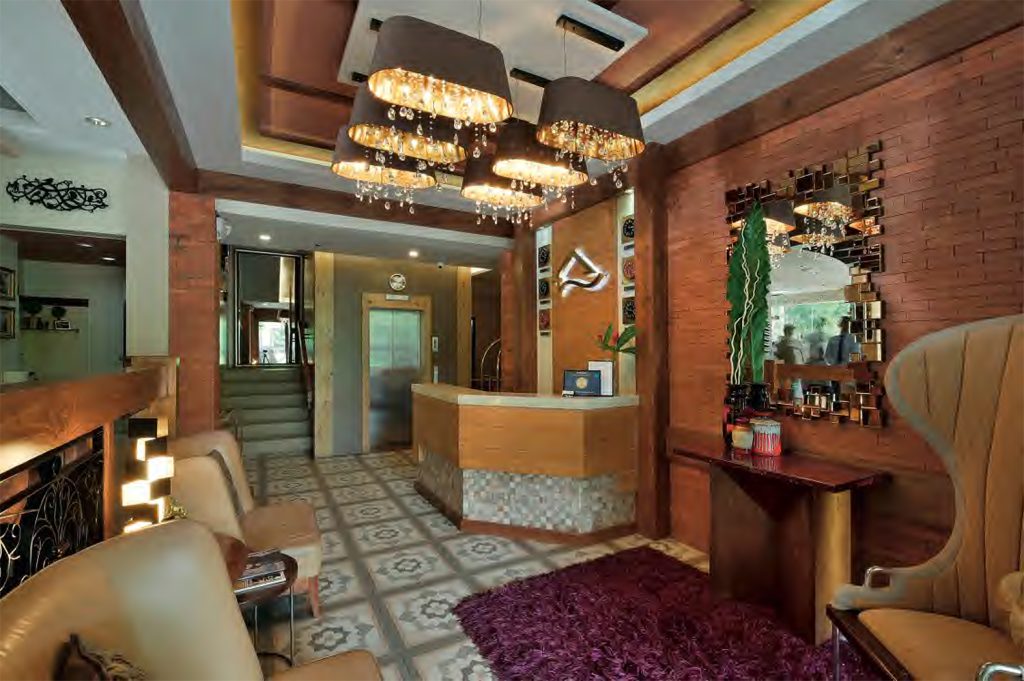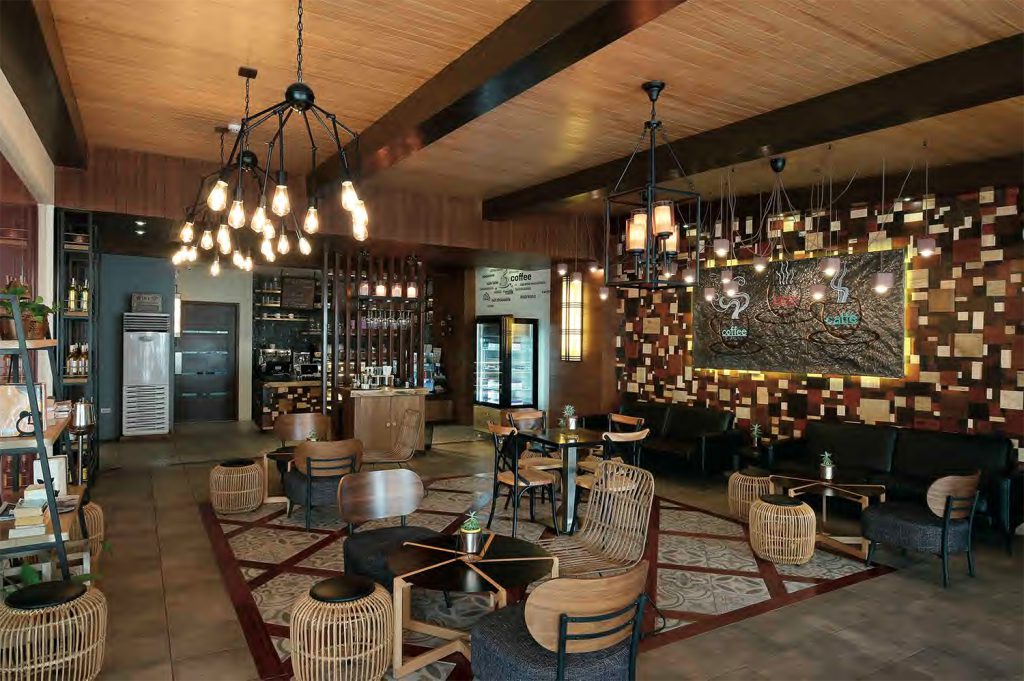
Well-traveled guests are surprised when they have lunch at a café with tastefully eclectic interiors, or a boutique hotel with suites painted in sophisticated shades of gray, teal green, and rust in Tagbilaran City, Bohol.
Sweet Home Boutique Hotel was born when entrepreneur couple Virginia and Edsel Du sent their daughter, Iwih Jane, to Enderun College to study hotel administration. Edsel started to build a hotel for his daughter to run after her graduation.
The Dus put up a holding company named after their daughter, Iwih Du Corporation, of which Iwih is the president; Edsel, the CEO; and Virginia, the treasurer. It oversees two Bo’s Coffee and two Mang Inasal franchises, as well as the Sweet Home Hotel and the Sweet Home Café.
While the rest of the hotel was being built, Virginia started a coffee shop, Sweet Home Café, on the ground floor in 2012. Virginia says the Sweet Home Café doesn’t compete with her franchises of Bo’s Coffee, since the coffee concoctions and the menu of the two brands are different.
“Bo’s Coffee puts milk before the espresso, while Sweet Home Café puts the espresso before the milk. Sweet Home has an all-day breakfast menu, smoothies, and savories,” explains Virginia. Soon the café became a favorite spot for Bohol’s social set.

Interior designer Cocoy Cordoba was tasked to make the coffee shop appealing to a younger clientele. The stairwell leading to the coffee shop is painted red. It is embellished with Sweet Home’s coffee cup logo, made from metal imported from Bali.
Cordoba modernizes the look with conversation areas furnished with small, black leather sofas and accent chairs made of bentwood with black metal frames. Rattan stools, inspired by round cages, are likewise upholstered in black leather.
The lighting fixtures are reminiscent of the retro lights of the ’60s. The windows are adorned with distressed metal sheets with patterned cutwork that serve as a sun filter and a design element.

There are sitting areas on the balcony with a harbor view. Virginia’s collection of cacti adds life to the space, while hiding an ugly electric post from sight.
In the provinces, it’s rare to find a hotel whose décor has been thoughtfully conceived. When Cordoba was commissioned to decorate the hotel, he had to make the most of existing design on the ground floor.
The lobby was narrow and had a country feel, brick tiles and old-fashioned patterned flooring, which Virginia wanted. For the reception area to make an impact, Cordoba designed a cluster of droplights as a focal point and added a mirror to give the illusion of space. The space between the lobby and the café was opened up and separated by a handrail. Hence, the reception area is larger and more welcoming. Guests can easily settle in and relax with coffee and pastries.

To spruce up the neutral-colored country look of the café, Cordoba added purple to the chandelier shades and the dining chair upholstery.
The client wanted the rooms in several colors, unified by a recurring motif: a hand-painted curly vine on the wall. This motif is repeated on the carpet, the bedcovers, the drapery, and the throw pillows.
The room color palettes are done in yellow, rust, red, teal green, pastel blue, and gray. Cordoba’s favorite is the presidential suite because of the yellow color scheme with touches of gold, beige, and black. “Among the color palettes in the rooms, yellow is the most uplifting, yet it is warm,” he says.
Surrounded by a glass baluster, the balcony can be an entertaining area with a day bed and a sofa chair. The guests can also relax in a Jacuzzi that faces the bay. The Executive Suite is unique for being the only room with animal prints on the upholstery.

In 2018, Iwih came on board as the hotel’s operations manager, tasked to hire and train the staff to meet the guests’ expectations. “We teach them luxury language. For instance, when guests ask for directions, they don’t purse their lips like a typical Pinoy. They are given a script and learn to use their hands,” says Iwih. “Sweet Home is known for personalized service. As much as possible, the staff researches on the guests before their arrival.”
Sweet Home Hotel has been getting satisfactory ratings from guests, 80 percent of whom are foreigners. “The guests say the façade is simple, but they didn’t expect the rooms to be well-appointed and the food to be tasty,” says Iwih. “They like the home-cooked taste of the food, especially the ribs, the baked spaghettini, and the buffalo wings. They comment that the staff is efficient, polite, and has a good command of English.”
Driven by their success, the Dus are now building a resort in Panglao Island. AD
Photographs by Paul San Juan






































